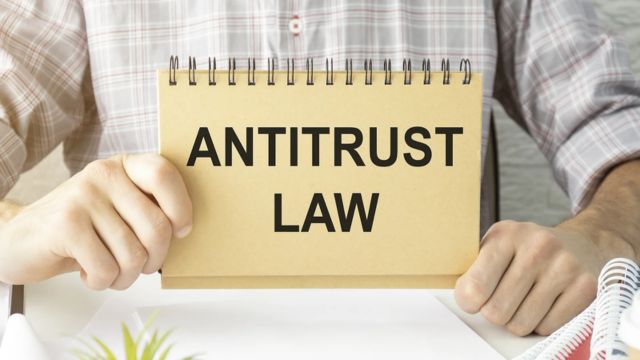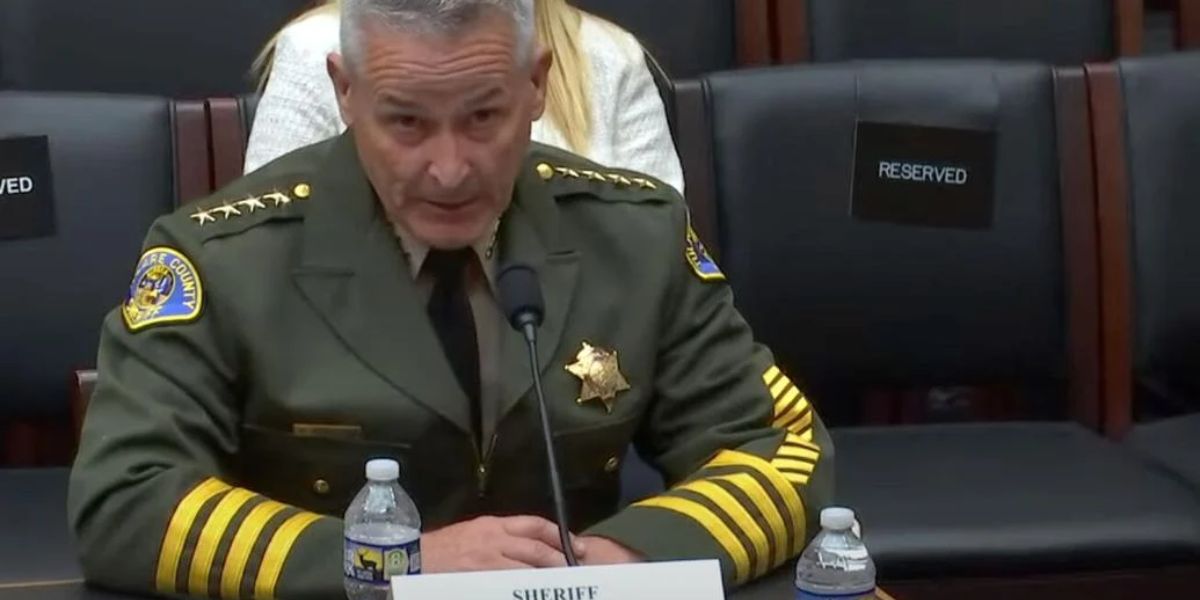- FTC overhauls merger filing rules: Biggest change in decades takes effect January 2025.
- Deal prep time will increase: New form estimated to take 121 hours for complex filings.
- Heightened private equity scrutiny: More disclosure on ownership and board ties required.
- Ordinary course strategic plans now fair game: CEOs and boards must share market analysis
- documents.
- Early planning crucial: Companies may consider prepping well before deal signing.
The Federal Trade Commission has unanimously approved changes to the U.S. premerger notification
form (Form) under the Hart-Scott-Rodino Antitrust Improvements Act of 1976, as amended (HSR Act).1
These changes, effectuated through a new final rule, represent the most comprehensive overhaul and
expansion of Form requirements in the history of the HSR Act.
The types of transactions that must be reported remain the same (i.e., no revision to reportability rules or
exemptions). However, the changes will provide the FTC and Department of Justice Antitrust Division (DOJ), which share jurisdiction for merger reviews in the United States, with significantly more information during the initial pre-closing waiting period (typically 30 days).
According to the authorities, this will facilitate more confident decisions about whether an in-depth investigation—which can take parties several months to comply with—is warranted or an investigation can be closed after the initial waiting period (or earlier by use of early termination).
The changes take effect in mid-January (90 days after publication in the Federal Register, which is
expected in the coming days, meaning only deals filed after that time will be required to submit the
additional information).
The changes and initial next steps businesses can take are discussed in more detail below, but the key
highlights include the following:
• Parties can still file an executed Letter of Intent (LOI), but the filed document must include “the
identity of the parties; the structure of the transaction; the scope of what is being acquired; calculation
of the purchase price; an estimated closing timeline; employee retention policies, including with
respect to key personnel; post-closing governance; and transaction expenses or other material terms.”
Setting such terms may delay when documents can be agreed on in the negotiation process.
• Descriptions of strategic rationale, product and service overlaps, and customer and supplier
relationships now must be included.
• Typical Item 4(c)/(d) documents expanded to include those prepared by or for a “supervisory leader of
the deal team and any draft going to a board member.”
• Additionally, parties will need to submit ordinary course “[p]lans and reports” provided to the CEO
and all materials provided to the board within the last year that contain competitive analysis, including
market share estimates, in overlap areas.

• Given the breadth of the Form changes, parties will need additional lead time to prepare complete
Forms, i.e., longer than the usual five or 10 business days.
• The rule reinstates early termination availability. Commissioners believe that more substantial filings
will permit the staff to clear non-problematic deals without opening an investigation.
HSR Process & Rule History
The HSR Act requires that, subject to applicable exemptions, mergers or acquisitions, including minority
acquisitions, that exceed a minimum jurisdictional threshold value (currently $119.5 million, but the
amount adjusts annually) and size of the deal parties, be reported to the FTC and the DOJ (the Agencies),
and that a waiting period be observed prior to closing.
As part of its rulemaking process, the FTC issued a notice of proposed rulemaking (NPRM) in 2023. In
response, the FTC received 721 comments. After the NPRM’s release, Congress confirmed two additional
FTC Commissioners who took issue with a number of the original proposals.2 In the end, the
Commissioners omitted 10 of the original 29 proposals and included only two without modification.3 Even with this narrowing, the FTC estimates that the changes would increase the time required for filing
Important! California’s Updated Traffic Rules for Red Light Turns in 2024
preparations by 68 hours, to a total of 121 hours for the most complex filings.
The new reporting data and information framework will add time and cost burdens to deals. The FTC also
announced it would create a new online portal enabling market participants and the general public to
submit comments on proposed transactions that may be under review by the FTC.
Additional Data and Information Sought
The changes to the Form dovetail with recent heightened enforcement scrutiny of private equity, roll-up
strategies, interlocking boards, information sharing between competitors, innovation competition, and
vertical mergers, in addition to requiring additional information upfront on horizontal overlaps between
parties. Collectively, this is the type of information the authorities may have sought under the current
regime, but only if they pursued an investigation.
Only certain transactions—notably executive compensation filings and issuer responsive filings where
issuer receives a notice from an activist investor increasing its stake—are exempt from the additional
disclosures in the rules.
1. General Transaction Information
• More LOI Detail. Under the new rules, filers will no longer be permitted to file based solely on a
bare-bones LOI or sparse term sheet. Going forward, the executed document sufficient to begin the
HSR process must include: “the identity of the parties; the structure of the transaction; the scope
of what is being acquired; calculation of the purchase price; an estimated closing timeline;
employee retention policies, including with respect to key personnel; post-closing governance; and
transaction expenses or other material terms.”
• Description of deal rationale. Acquirers now must provide a brief narrative describing the
transaction rationale. While the Form contemplates references to documents included with the
transaction, the parties will be required to distill the strategy into the Form itself.
• All Agreements Related to the Transaction. The new framework requires filing persons to produce
all agreements, inclusive of schedules, exhibits, side letters, and the like, that relate to the
transaction. The parties must also identify (but not produce) other agreements between each other
that are not specific to the transaction, such as non-compete, lease, licensing, master service,
operating, or supply agreements.
2. Private Equity Structures, Roll-up Strategies & Buyer Board Interlocks/Information Sharing
• Expanded Minority Ownership Disclosure. Additional reporting of minority investors is now
required, which is particularly notable for the private equity space. In general, filers must identify
investors holding 5% or more of (i) the ultimate parent entity, (ii) all intermediate entities between
the ultimate parent entity and the entity involved in the transaction, (iii) the entity involved in the
transaction, as well as (iv) controlled subsidiaries of the acquiring entity. Rather than identify just
a General Partner (GP) for Limited Partnerships (LPs) as is currently allowed, under the new
regime filers also must identify the 5% or greater LPs (but only those that “have or will have the
right to serve as, nominate, appoint, veto, or approve board members, or individuals with similar
responsibilities” for the particular LP or its GP or management company). Enclosed in the
Appendix to this Alert are graphics the FTC provided showing current reporting gaps that the new
rules are intended to close.
Corporate Structure Organizational Charts. For transactions where a fund or master limited
partnership is the ultimate parent entity, filers also have to provide an organizational chart
sufficient to identify and show the relationship of all affiliated or associated entities (i.e., those
under the same investment management, but not within the same filing person), if these charts
exist (but no need to create them if not).
• More Disclosures on Prior Acquisitions. Prior acquisition disclosure remains limited to a five-year
look back period and of companies with at least $10 million in total assets or annual sales, but
disclosure applies to both buyer and seller (current rules require this information from buyers
only).
• Buyer Operating Company Board Members Related to Horizontal Overlap. For all entities within
the acquiring person responsible for the development, marketing, or sale of products or services
that are identified as overlaps within the Overlap Description or as supply relationships within the
Supply Relationships Description (see below), the buyer must list all current officers and directors
(or in the case of unincorporated entities, individuals exercising similar functions) and those who
have served in one of these positions within the three months before filing that also serve as an
officer or director of another entity that derives revenue in the same NAICS codes reported by the
target. Filers do not need to disclose board observers; however, the new rule would require
disclosure about entities not directly involved in the transaction.
• Acquiring Entity Control Chain Board Members. The buyer must also provide the same board
member information for entities essentially within the same ownership stack or silo—i.e., for
entities the acquiring entity directly or indirectly controls, entities that directly or indirectly
control the acquiring entity, and entities within the acquiring person that have been or will be
created as a result of or as contemplated by the transaction.4 This applies regardless of whether or
not an entity is an operating company. Similarly, filers do not need to disclose board observers.
3. Horizontal Overlaps, Innovation Competition, & Vertical Relationships
• Overlap Narrative, Including Pipeline Products. Filers are required to affirmatively describe
product and service overlaps, including any that arise due to products or services that are in
development (referred to in the Form as the overlap description).
• Supply Relationships. Parties now will have to identify areas where one party has either supplied
or licensed the other party or a competitor of the other party (referred to in the Form as the supply
relationships description). This will help the authorities identify any areas where a transaction may
give rise to questions about the possibility that the combined company could foreclose certain
competitors by denying them inputs.
• Sales & Customer/Channel Information. Under the new framework, filers must provide additional
information about sales and customers for both horizontal overlaps and supply relationships. For
horizontal overlaps, filers must submit sales by product or service for the most recent year (or
projected sales for future products). For vertical supply relationships, sales to the other party or
their competitors are also required. And in both the horizontal and vertical context, top 10
customers (including by customer category for horizontal overlaps) are required.
NAICS Revenues & D/B/A Names. Filers will still have to use 6-digit NAICS codes to classify their
products (the use of 10-digit codes has been eliminated). Additionally, instead of providing precise
revenue broken down by NAICS code, filers will have to state which of five revenue ranges apply to
each code. Where the parties have overlapping NAICS codes, they will have to identify relevant
operating business and “doing business as” name(s) and well as provide certain geographic data.
4. Additional HSR Document Requests
• Added Deal Team Custodian for Transaction-Specific Analysis (fmr. “Item 4(c)/(d)” Documents).
Filers must include transaction-specific documents (previously referred to as Item 4(c) and 4(d)
documents) if the documents were provided to an officer, director, and now also the “supervisory
deal team lead,” who may not be an officer or director. The supervisory deal team lead need not
have ultimate decision-making authority, but “functionally lead or coordinate the day-to-day
process for the transaction at issue” and “would have responsibility for preparing or supervising
the assessment of the transaction and be involved in communicating with the individuals, such as
officers or directors, who have the authority to authorize the transaction.” While the new rules still
only require final versions of documents and not drafts (which were proposed for inclusion in the
NPRM), the rules and instructions provide that a document that is presented to any single board
member is no longer a “draft” and therefore must be included.
• CEO/Board Ordinary Course Strategic Plans in Overlap Markets. Filers now also need to provide
ordinary course strategic plans and reports that discuss market shares, competition, competitors,
or markets of any product or service that is provided by both parties to the transaction, if those
documents were shared with a chief executive of an entity involved in the transaction, or with the
Boards of Directors of the entities involved in the transaction. This requirement is limited to
documents created one year prior to the filing.
• Verbatim English Translations. All non-English language documents must be translated into
English. The rule does not specify a particular method of translation, but the resulting translations
will have to be verbatim, accurate, and complete.
• Updated “Pull-and-Refile” Procedures. In the event of a voluntary withdrawal and refiling to
restart a waiting period, the set of transaction-specific documents still will need to be updated to
reflect any additional documents created in the interim. The Commission added requirements that
the refiled application must include updated transaction agreements and updated information
about subsidies from foreign entities of concern (described below).
5. Disclosures Facilitating Government Cooperation
• Other Merger Control Filings. While previously voluntary, filers would now be required to identify
the non-U.S. jurisdictions in which each filing person has already filed or is preparing to file
notification for the transaction.
• Subsidies and Countervailing Duties. Under the new framework, filers must disclose subsidies
(i.e., grants and loans) from countries or entities that are considered to be economic or strategic
threats to the U.S. (as defined by 42 U.S.C. 18741(a)(5)(C)), currently including Russia, North
Korea, Iran, and China, and any products produced in any such country that are: (a) subject to
countervailing duties (i.e., “duties intended to offset the price effect of significant foreign
government subsidies on a product or good”), or (b) the subject of an investigation by any
jurisdiction for potential countervailing duties (limited to knowledge or belief). These additions are
based on the passage of the Merger Filing Fee Modernization Act of 2022.
Defense Contracts. Additionally, both the acquiring and acquired persons will have to identify
whether they have existing or pending defense or intelligence procurement contracts, as defined by
10 U.S.C. 101(a)(6) and 50 U.S.C. 3033(4), valued at $100 million or more, and relevant to any
party overlap or supply relationship.
Practice Points
Given the scope of the information changes and increased time anticipated to prepare the information,
parties that are frequent filers or otherwise anticipate filing early in 2025 should consider beginning their
preparations in the near term. There are certain general steps entities can consider now in anticipation of
the new Form.
Footnotes
[1] 15 U.S.C. § 18a
[2] “Statement of Commissioner Melissa Holyoak,” Federal Trade Commission, Oct. 10, 2024. (hereinafter “Holyoak Stmt.”) (“I have worked to curb the excesses of the NPRM in meaningful ways that would not have happened absent my support.”). “Concurring Statement of Commissioner Andrew N. Ferguson,” Federal Trade Commission, Oct. 10, 2024. (“The NPRM, however, was a nonstarter. My colleagues and I engaged in intense negotiations to separate the lawful wheat from the lawless chaff.”).
[3] See Holyoak Stmt. at 2-3.
[4] For example: Fund holds 100% of Topco, which owns 100% of Intermediate Co, which holds 100% of Buyer. Fund also holds 100% of Topco2, which owns 100% of each of Companies A, B, and C, which companies are not in any way related to the Target’s business. The filing party would need to identify all officers and directors of Fund, Topco, Intermediate Co, and Buyer which also serve as an officer or director of another entity that derives revenue in the same NAICS codes reported by the Target, but not officers or directors of Topco2, or Companies A, B, or C.




